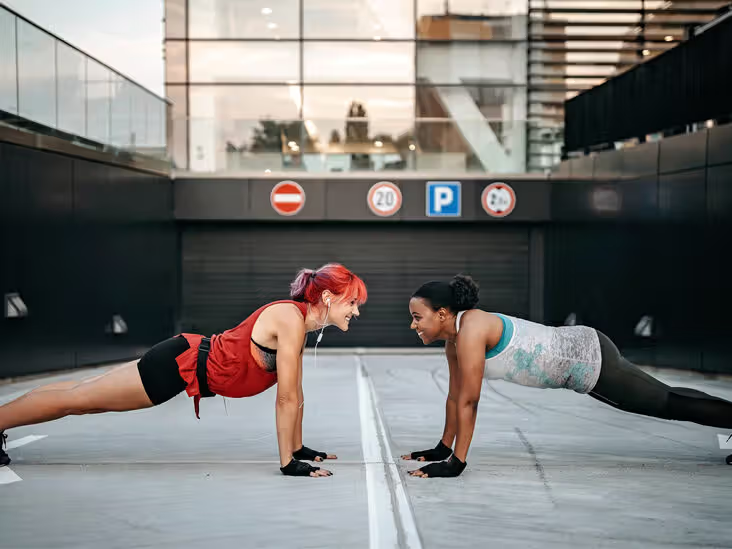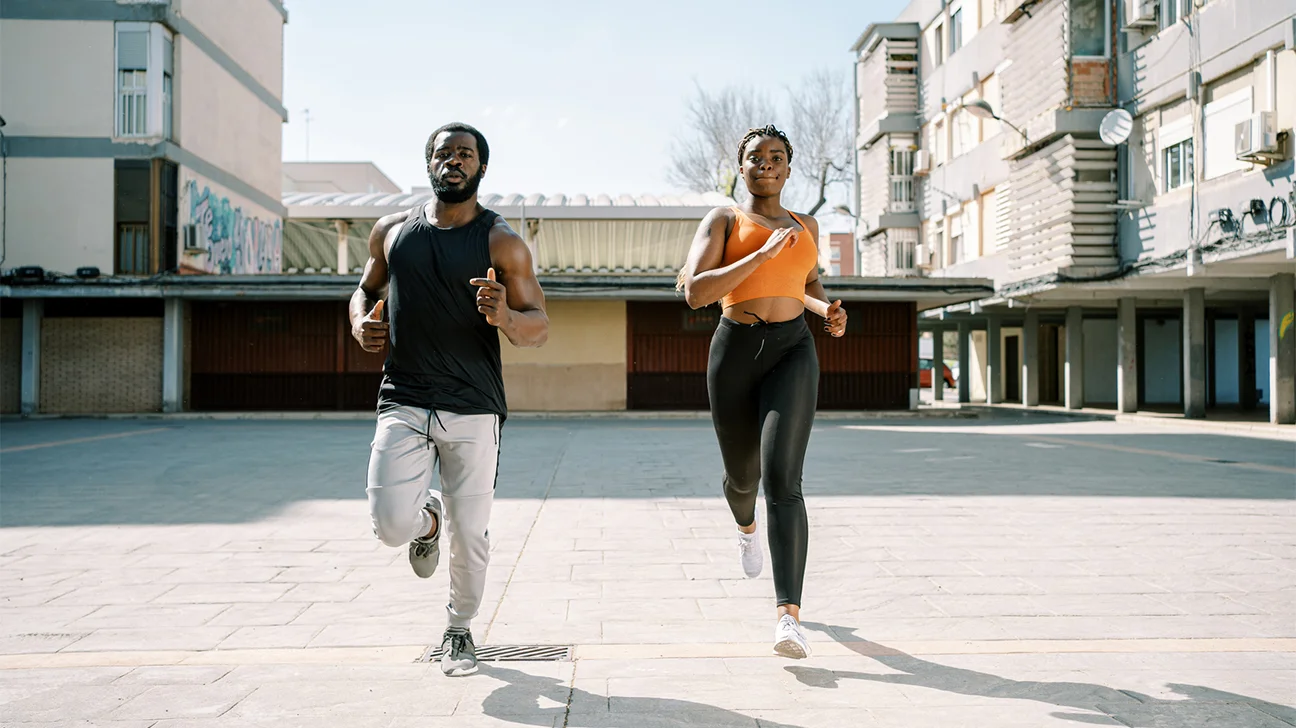Introduction
In today’s fast-paced world, health and fitness are becoming more critical than ever. But when we talk about “health-related fitness,” it’s essential to understand what that term really means. Health-related fitness is often confused with other forms of physical fitness, such as skill-related or performance-related fitness. However, health-related fitness focuses primarily on how well your body functions in everyday activities and your long-term health outcomes. It goes beyond looking good; it’s about feeling good and maintaining a functional and disease-free body.
This article will explore the best definition of health-related fitness, delve into its key components, and highlight its significance for overall health.
What is Health-Related Fitness?
Health-related fitness can be defined as a state of physical well-being that enables an individual to perform daily activities efficiently, with energy and without undue fatigue. It is closely linked to the ability to reduce risks of diseases such as cardiovascular disease, diabetes, and obesity. It also plays a significant role in promoting mental health and enhancing the quality of life.
Health-related fitness is distinct from other types of fitness, like athletic fitness, which focuses on maximizing performance in competitive sports. Health-related fitness is about ensuring that your body is functioning at an optimal level for health and longevity.
Components of Health-Related Fitness
Health-related fitness is composed of several key elements, each of which contributes to overall well-being. These five components are:
Cardiorespiratory Endurance
Muscular Strength
Muscular Endurance
Flexibility
Body Composition
Each of these components works together to form a well-rounded and healthy individual. Let’s break down these components:
1. Cardiorespiratory Endurance
Cardiorespiratory endurance refers to the ability of the heart, lungs, and blood vessels to supply oxygen to your muscles during extended physical activity. It is a measure of how efficiently your cardiovascular and respiratory systems work together to provide energy during exercises such as running, swimming, or cycling.
Good cardiorespiratory endurance reduces the risk of heart disease, high blood pressure, and stroke. It also helps in managing weight and improving mental health. Common ways to improve this include aerobic exercises like jogging, brisk walking, and swimming.
2. Muscular Strength
Muscular strength is the amount of force a muscle or group of muscles can exert against resistance. This is important for everyday activities such as lifting, pushing, or pulling objects. Strong muscles also help protect your joints and maintain posture.
Building muscular strength can be achieved through resistance training exercises like weightlifting, bodyweight exercises (e.g., push-ups, squats), and using resistance bands. Stronger muscles improve overall mobility, reduce injury risk, and support better physical performance in day-to-day tasks.
3. Muscular Endurance
Muscular endurance is the ability of a muscle or group of muscles to sustain repeated contractions over a period. While muscular strength is about the maximum force you can exert, muscular endurance is about how long your muscles can perform before fatigue sets in.
Endurance is crucial for activities that require prolonged effort, such as hiking, cycling, or even standing for long periods. It is also essential for maintaining posture and reducing the risk of injury during everyday activities. Activities like circuit training, long-distance running, or repetitive resistance exercises help in improving muscular endurance.
4. Flexibility
Flexibility refers to the range of motion available in a joint or group of joints. It is important for performing everyday movements like bending, stretching, and reaching. Poor flexibility can limit mobility, increase the risk of injuries, and cause joint pain, especially as you age.
Stretching exercises, yoga, and Pilates are effective ways to improve flexibility. Improved flexibility enhances overall movement efficiency, helps reduce muscular tension, and prevents joint-related problems as you grow older.
5. Body Composition
Body composition refers to the proportion of fat and non-fat mass in the body. A healthy body composition means having a lower proportion of body fat relative to muscle, bone, and other lean tissues. Maintaining a healthy body composition reduces the risk of diseases like obesity, type 2 diabetes, and cardiovascular disease.
This component is influenced by diet, physical activity, and lifestyle choices. By incorporating both aerobic and resistance training, along with proper nutrition, you can manage body fat and improve lean muscle mass, contributing to better overall health.
Importance of Health-Related Fitness
Health-related fitness plays a critical role in overall well-being, not just physically but mentally and emotionally as well. Here are some reasons why it’s so vital:
1. Disease Prevention
Health-related fitness helps in preventing a range of chronic diseases. Cardiovascular diseases, type 2 diabetes, hypertension, and certain cancers are closely linked to a lack of physical activity and poor fitness levels. By maintaining a fitness routine that incorporates all five components, you can significantly reduce the risk of these diseases.
2. Mental Health
Physical fitness is also closely related to mental health. Regular exercise improves mood, reduces anxiety and depression, and boosts overall cognitive function. Exercise stimulates the release of endorphins, which are natural mood lifters, helping to fight off stress and enhance mental clarity. It also helps improve sleep, which is crucial for emotional well-being.
3. Improved Quality of Life
A well-rounded health-related fitness routine improves your ability to carry out daily tasks without fatigue or discomfort. It enhances your energy levels, making it easier to handle everyday responsibilities like housework, childcare, and work-related activities. Improved fitness can lead to greater independence, especially as you age, reducing the need for medical assistance and increasing your ability to live a fulfilling life.
4. Enhanced Longevity
Studies have consistently shown that individuals who maintain good levels of health-related fitness tend to live longer. Cardiorespiratory fitness, in particular, has been linked to lower mortality rates from all causes. Regular exercise and a balanced lifestyle not only improve life quality but also increase life expectancy.
5. Social Benefits
Engaging in regular fitness activities often involves interacting with others, whether it’s joining a fitness class, walking with a friend, or participating in team sports. This social interaction can enhance feelings of community and belonging, contributing to overall happiness and reducing feelings of loneliness.
How to Improve Health-Related Fitness

Improving health-related fitness involves making regular physical activity a part of your daily routine. Here are some practical steps to consider:
1. Set Realistic Goals
Start by setting clear, achievable goals based on your current fitness level. For example, if your goal is to improve cardiorespiratory endurance, start with short, manageable workouts like walking or swimming for 20 minutes, then gradually increase the duration and intensity.
2. Incorporate a Variety of Exercises
Health-related fitness encompasses multiple components, so it’s essential to incorporate a range of activities that target each area. For example:
Aerobic exercises (walking, cycling, swimming) improve cardiovascular endurance.
Strength training (weightlifting, bodyweight exercises) enhances muscular strength.
Stretching routines (yoga, Pilates) improve flexibility.
Resistance training and aerobic exercises help improve body composition.
3. Stay Consistent
Consistency is key to achieving health-related fitness. While some progress can be seen in the short term, maintaining long-term fitness and health benefits requires regular effort. Aim for at least 150 minutes of moderate-intensity exercise or 75 minutes of vigorous-intensity exercise each week, as recommended by health organizations.
4. Pay Attention to Nutrition
Physical fitness is not solely about exercise. A balanced diet rich in fruits, vegetables, lean proteins, and whole grains is essential for maintaining a healthy body composition and providing the energy needed for physical activity.
5. Get Adequate Rest
Rest and recovery are essential parts of any fitness routine. Ensure that you get enough sleep and allow your body to recover between workout sessions. Overtraining can lead to burnout and injury, hindering your progress.
Conclusion
Health-related fitness is an integral part of maintaining a high quality of life, enhancing both physical and mental health. It encompasses various components such as cardiorespiratory endurance, muscular strength, muscular endurance, flexibility, and body composition. Each of these components plays a unique role in ensuring that the body functions optimally, reducing the risk of chronic diseases, and promoting overall well-being.
Achieving health-related fitness is not just about looking good; it’s about feeling good, being strong, and living a longer, healthier life. By incorporating regular physical activity, focusing on all aspects of fitness, and making healthy lifestyle choices, you can improve your fitness and enjoy the countless benefits it brings.
This guide to health-related fitness outlines its importance and practical steps toward achieving it. Feel free to adapt these concepts for your blog in simple language!
FAQs
What is health-related fitness?
Health-related fitness refers to a level of physical fitness that focuses on improving your overall health and well-being. It includes components like cardiorespiratory endurance, muscular strength, muscular endurance, flexibility, and body composition. The goal is to enhance your ability to perform daily activities efficiently and reduce the risk of chronic diseases.
Why is health-related fitness important?
Health-related fitness is important because it directly impacts your physical and mental health. It helps prevent chronic diseases such as heart disease, diabetes, and obesity, improves mental well-being, and enhances the quality of life. Staying fit also boosts energy levels, reduces stress, and improves longevity.
What are the five components of health-related fitness?
The five main components are:
Cardiorespiratory Endurance: The ability of your heart and lungs to supply oxygen during prolonged physical activity.
Muscular Strength: The maximum amount of force a muscle can exert against resistance.
Muscular Endurance: The ability of a muscle to perform repeated contractions over time.
Flexibility: The range of motion around a joint.
Body Composition: The ratio of body fat to lean mass (muscle, bone, etc.).
How can I improve my health-related fitness?
To improve your health-related fitness:
Engage in aerobic exercises (e.g., running, swimming) to boost cardiovascular endurance.
Perform strength training (e.g., lifting weights) to build muscular strength.
Practice flexibility exercises (e.g., stretching, yoga) to improve mobility.
Focus on muscular endurance through bodyweight exercises or repetitive motions (e.g., circuit training).
Maintain a healthy diet and engage in physical activities to improve body composition.
How often should I exercise for health-related fitness?
For general health, it’s recommended to engage in moderate-intensity aerobic activity for at least 150 minutes per week, or vigorous-intensity activity for 75 minutes per week. Additionally, strength training exercises should be done two or more days per week. Flexibility exercises can be performed daily.
What is the difference between health-related fitness and skill-related fitness?
Health-related fitness focuses on improving your body’s ability to function efficiently in daily life and prevent diseases. It emphasizes general health, endurance, strength, and flexibility.
Skill-related fitness, on the other hand, is geared toward improving abilities that enhance athletic performance, such as agility, balance, coordination, power, reaction time, and speed.
Can I focus on only one component of fitness and still be healthy?
While focusing on one component, such as strength or cardiovascular fitness, is beneficial, true health-related fitness requires a balanced approach. By addressing all five components (cardiorespiratory endurance, muscular strength, muscular endurance, flexibility, and body composition), you ensure your body functions optimally and reduces the risk of injury or disease.
What role does nutrition play in health-related fitness?
Nutrition plays a crucial role in achieving health-related fitness. A balanced diet provides the necessary energy and nutrients for muscle growth, recovery, and overall health. It also helps in maintaining a healthy body composition by supporting muscle mass and managing fat levels.
How can I track my progress in health-related fitness?
You can track your fitness progress by:
Monitoring improvements in exercise duration or intensity (e.g., running faster or lifting heavier weights).
Measuring body composition through body fat percentage or waist-to-hip ratio.
Noting improvements in flexibility, such as a wider range of motion during stretches.
Assessing how easily you can perform daily activities with less fatigue.
Can older adults improve their health-related fitness?
Yes, older adults can significantly improve their health-related fitness. Regular exercise can help maintain muscle mass, improve balance and flexibility, and reduce the risk of chronic diseases. It’s never too late to start, and even light to moderate activity can have profound health benefits for seniors.
What are some examples of exercises that improve each component of health-related fitness?
Cardiorespiratory Endurance: Jogging, cycling, swimming, brisk walking.
Muscular Strength: Weightlifting, push-ups, squats, resistance training.
Muscular Endurance: Circuit training, long-distance running, bodyweight exercises (e.g., plank, lunges).
Flexibility: Yoga, Pilates, dynamic stretching, static stretching.
Body Composition: A combination of aerobic exercise, strength training, and a healthy diet.
How long does it take to see results from a health-related fitness program?
Results vary depending on individual factors like starting fitness level, consistency, and workout intensity. However, noticeable improvements in cardiovascular endurance or strength may occur within 4-6 weeks of regular exercise. Changes in body composition (e.g., fat loss, muscle gain) typically take longer, around 8-12 weeks or more, depending on your diet and fitness routine.
Can I improve my fitness with just 30 minutes of exercise a day?
Yes, 30 minutes of exercise a day can be highly effective if done consistently. Engaging in moderate to vigorous physical activity for just 30 minutes daily can improve cardiovascular endurance, muscular strength, and flexibility over time. It can also help manage body weight and reduce the risk of chronic diseases.
What is the relationship between mental health and fitness?
Physical fitness positively impacts mental health by reducing stress, anxiety, and depression. Regular exercise releases endorphins, which are natural mood elevators. It also promotes better sleep, enhances self-esteem, and improves cognitive function, all of which contribute to better mental well-being.
Can I achieve health-related fitness without going to the gym?
Yes, you can achieve health-related fitness without a gym by engaging in activities like walking, running, home-based strength training (using bodyweight or resistance bands), and stretching exercises. Outdoor activities like hiking, swimming, and cycling also contribute to overall fitness.




